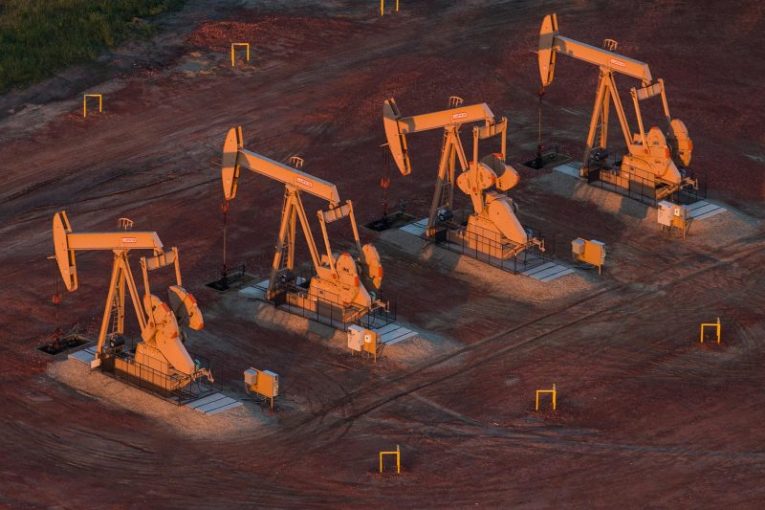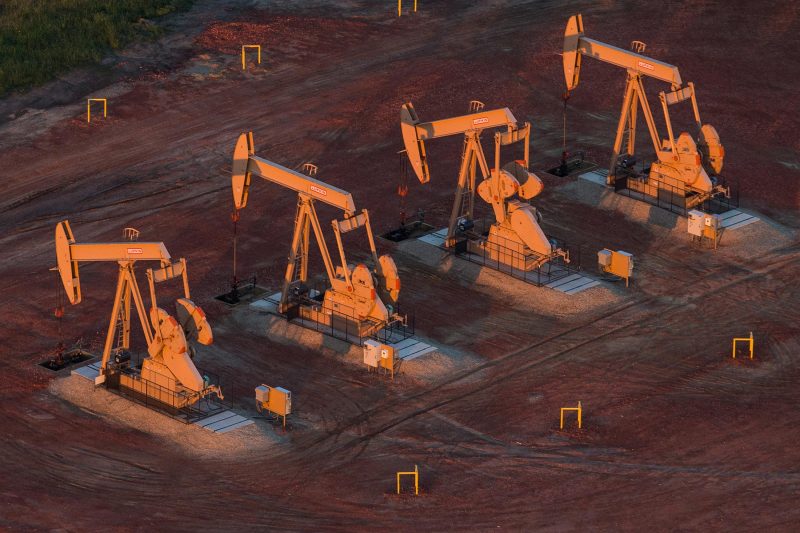
 The U.S. oil rig count fell for a third week in a row, extending a two-month drilling decline, although producers have sharply ramped up bets against a fall in oil prices, which could spur another investment surge.
The U.S. oil rig count fell for a third week in a row, extending a two-month drilling decline, although producers have sharply ramped up bets against a fall in oil prices, which could spur another investment surge.
The oil rig count fell seven to 736 in the week to Oct. 20, the lowest level since June, General Electric Co’s Baker Hughes energy services firm said in its closely followed report on Friday.
The rig count, an early indicator of future output, is still much higher than a year ago when only 443 rigs were active after energy companies boosted spending plans as crude recovered from a two-year price crash.
The recovery in drilling, however, lasted for 14 months before stalling in August and September after producers trimmed spending plans due to softer prices.
U.S. crude futures have averaged over $49 a barrel so far in 2017, easily topping last year’s $43.47 average. Looking ahead, futures were trading around $51 for the balance of the year and $52 for calendar 2018 .
With prices for 2018 at their strongest since April, there has been a surge in hedging, that will allow U.S. shale producers to keep drilling even if prices retreat, major oil executives and bankers said in London this week. .
Ben Montalbano, co-founder of PetroNerds, a Denver, Colorado, research firm that tracks hedging at about 40 medium-sized oil producers, said those firms are more heavily hedged than at any point in the past six quarters.
U.S. shale production is expected to rise to a record high 6.1 million barrels per day (bpd) in November, according to federal energy projections this week.
Analysts at Simmons & Co, energy specialists at U.S. investment bank Piper Jaffray, this week revised slightly downward their forecast for the total oil and natural gas rig count, now expecting it to average 877 in 2017, 939 in 2018 and 1,087 in 2019. Last week, it forecast 880 in 2017, 956 in 2018 and 1,112 in 2019.
That compares with 866 oil and gas rigs so far in 2017, 509 in 2016 and 978 in 2015. Most rigs produce both oil and gas.
Analysts at U.S. financial services firm Cowen & Co’s capital expenditure tracking was unchanged this week, showing the 64 E&Ps it tracks planned to increase spending by an average of 49 percent in 2017 from 2016.
That expected 2017 spending increase followed an estimated 48 percent decline in 2016 and a 34 percent decline in 2015, Cowen said.
(Reporting by Scott DiSavino; Editing by Marguerita Choy)
You can read more of the news on source



